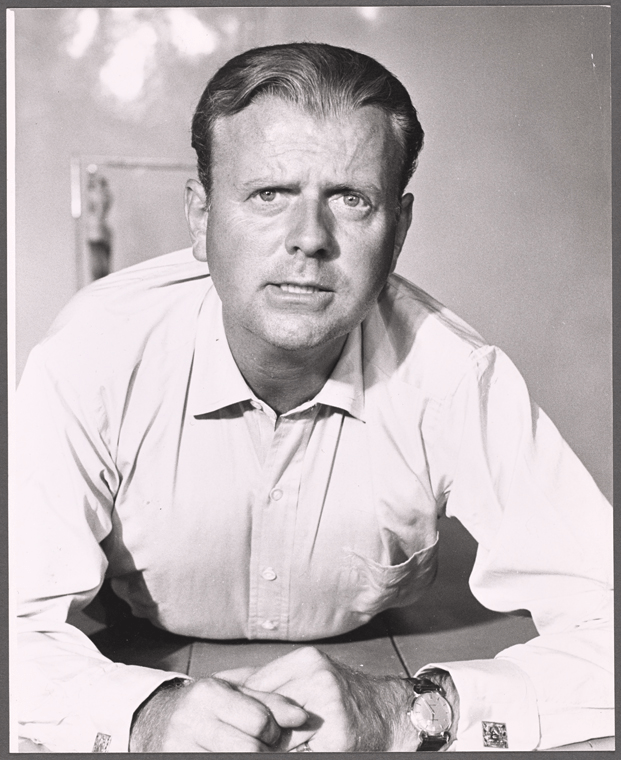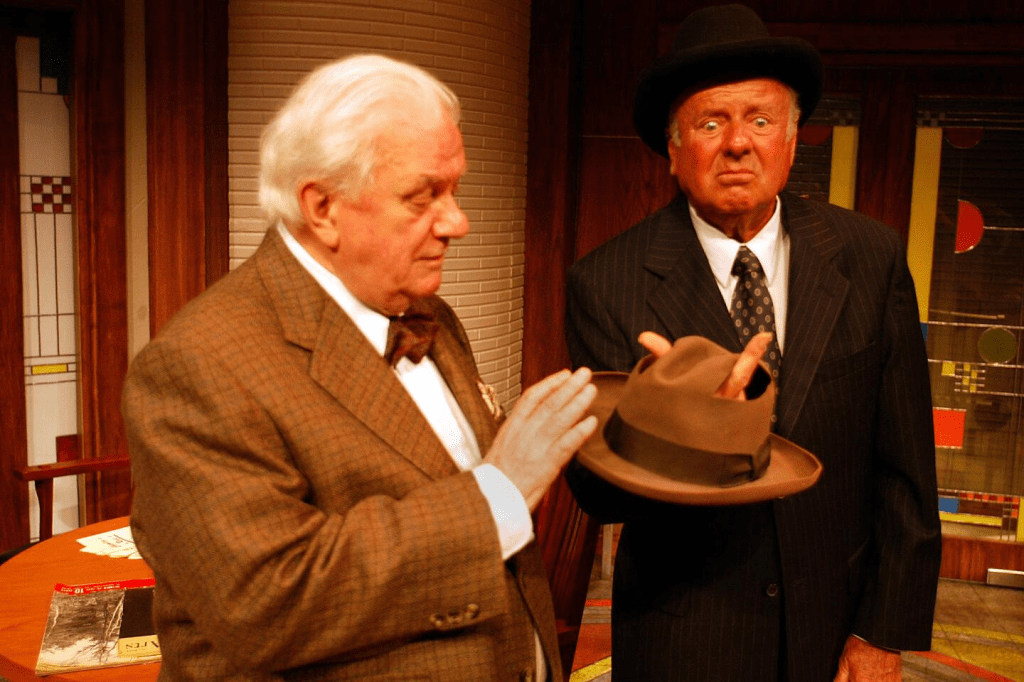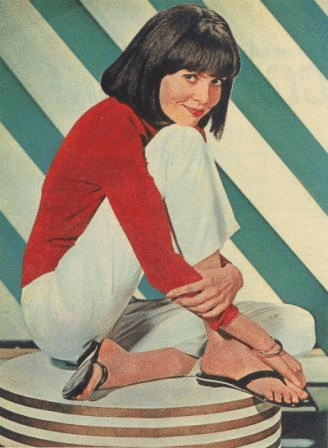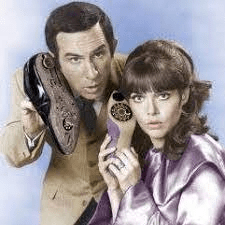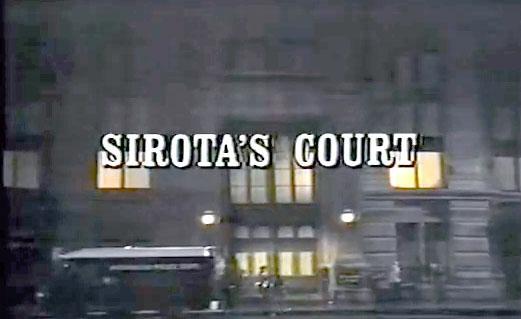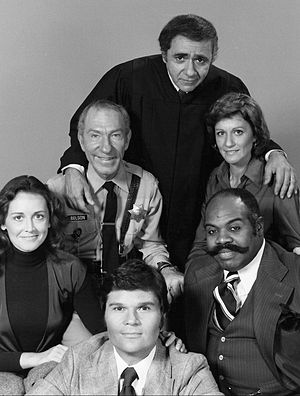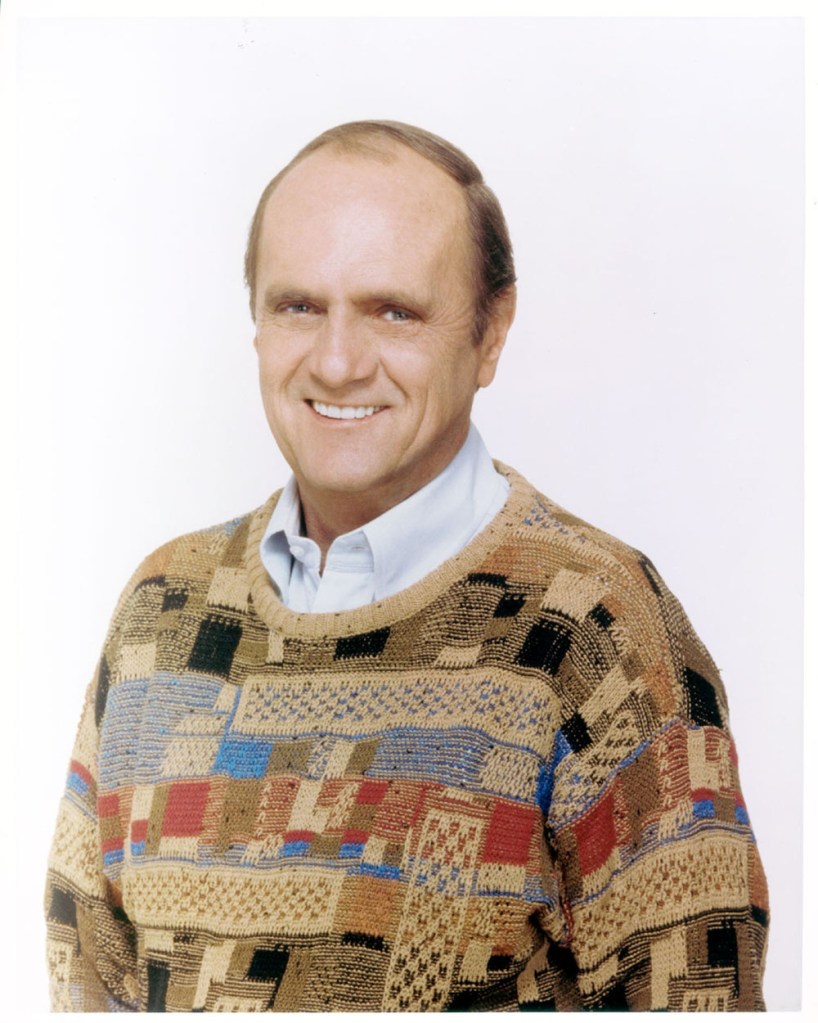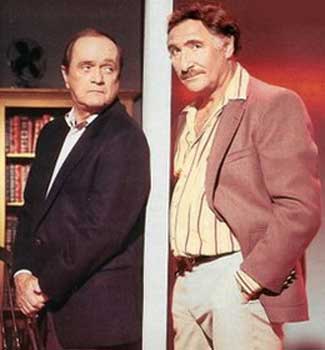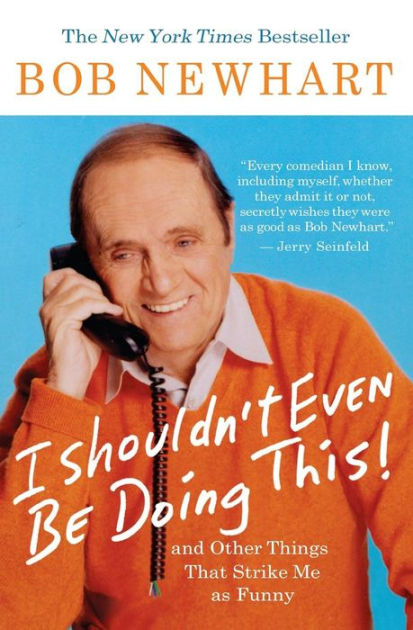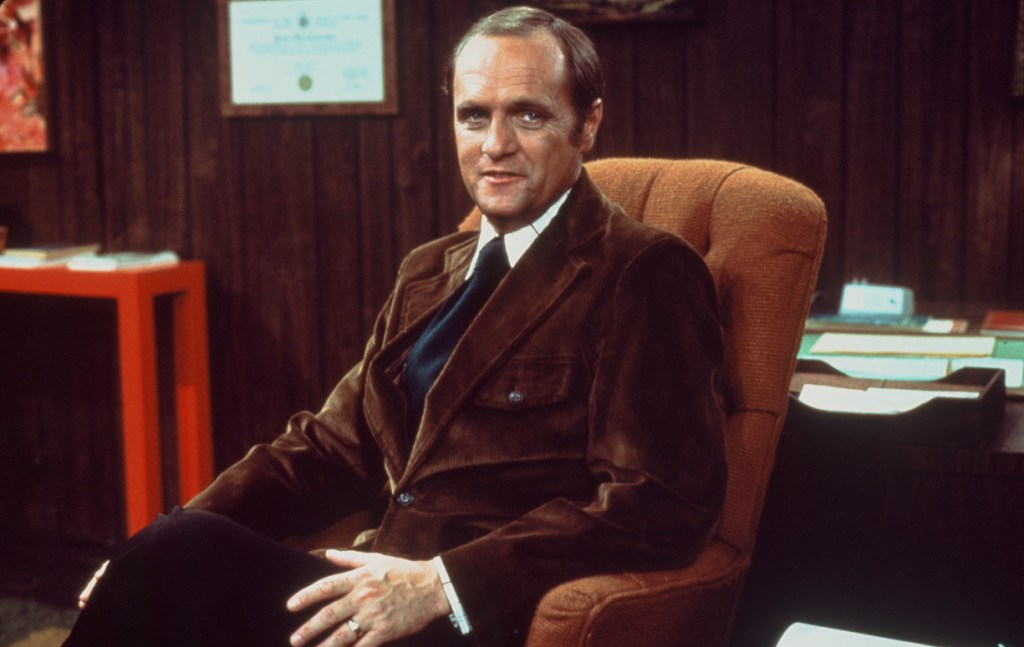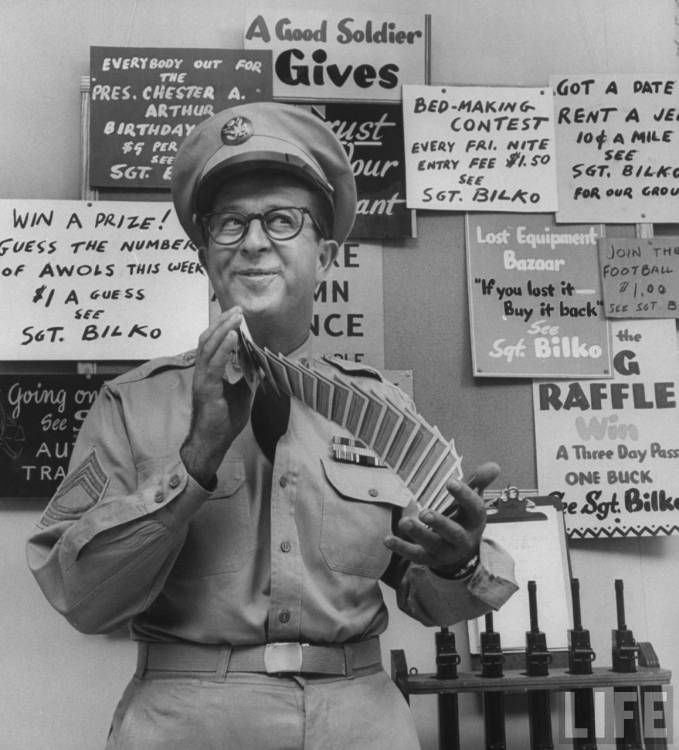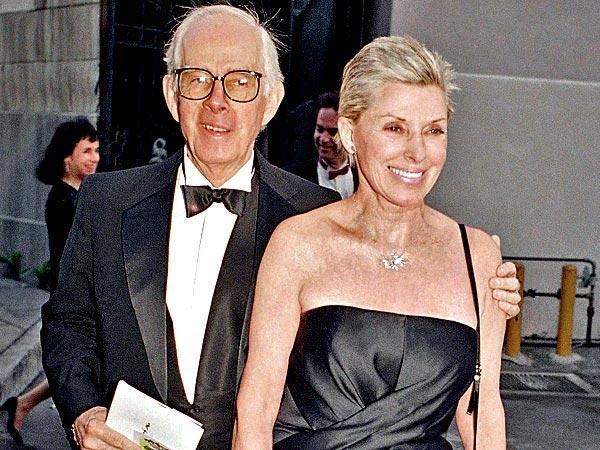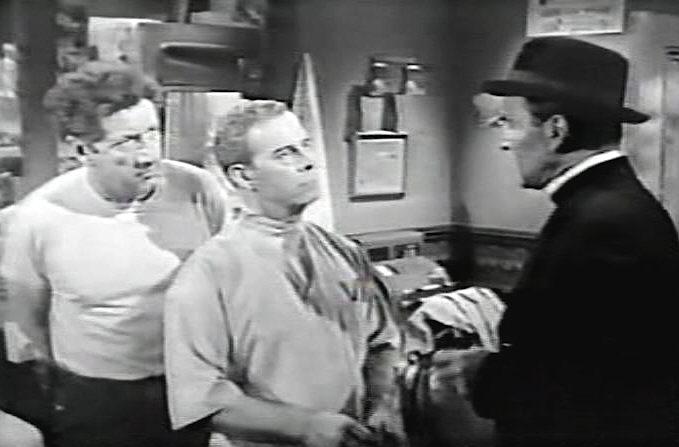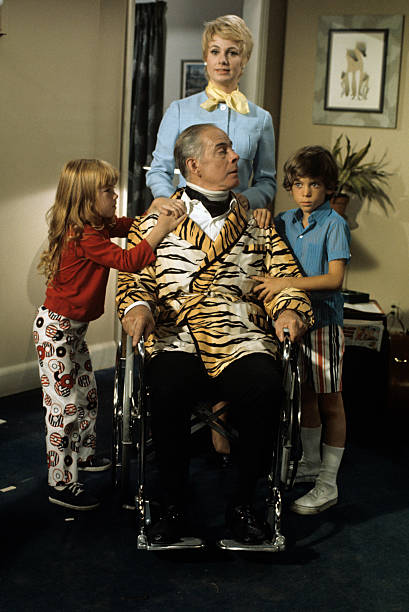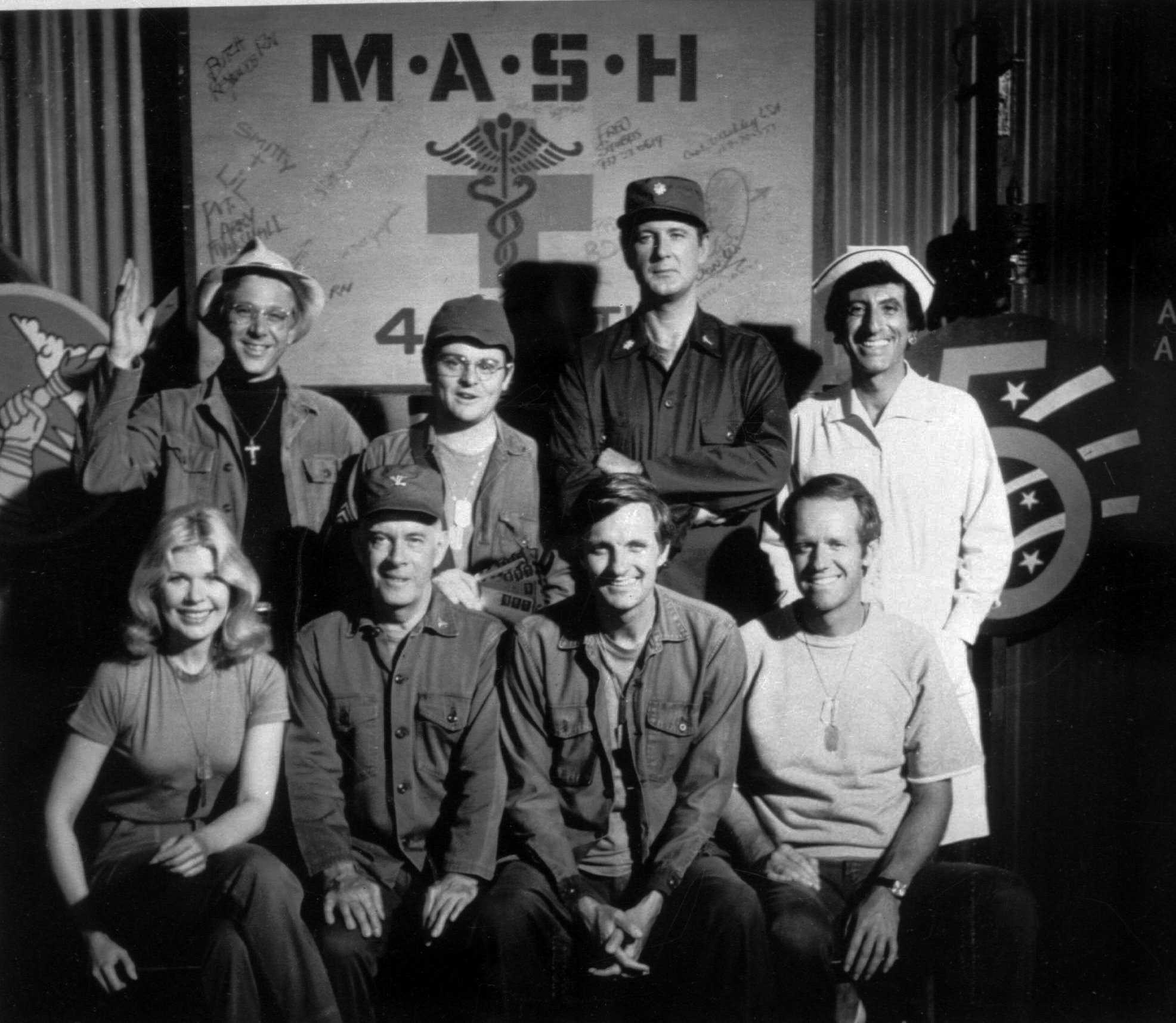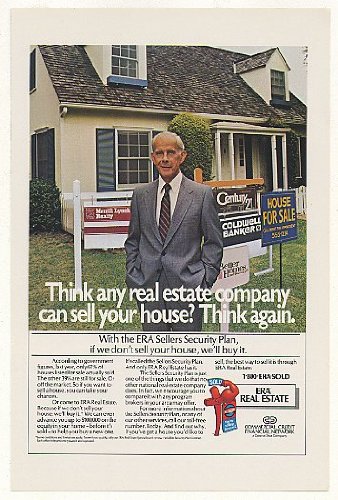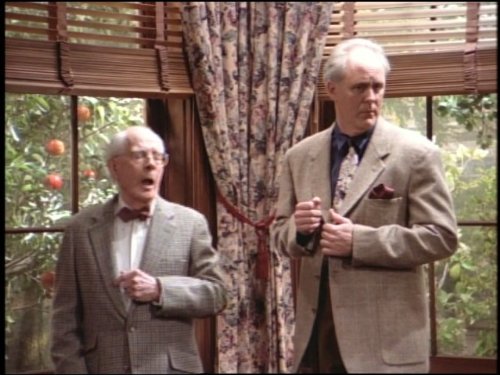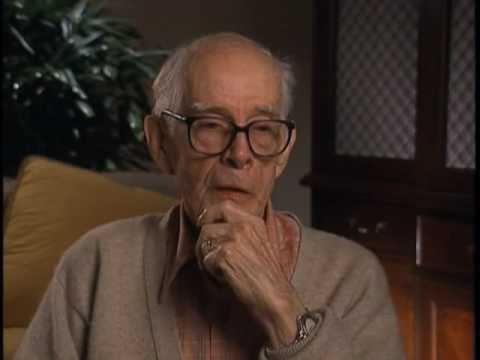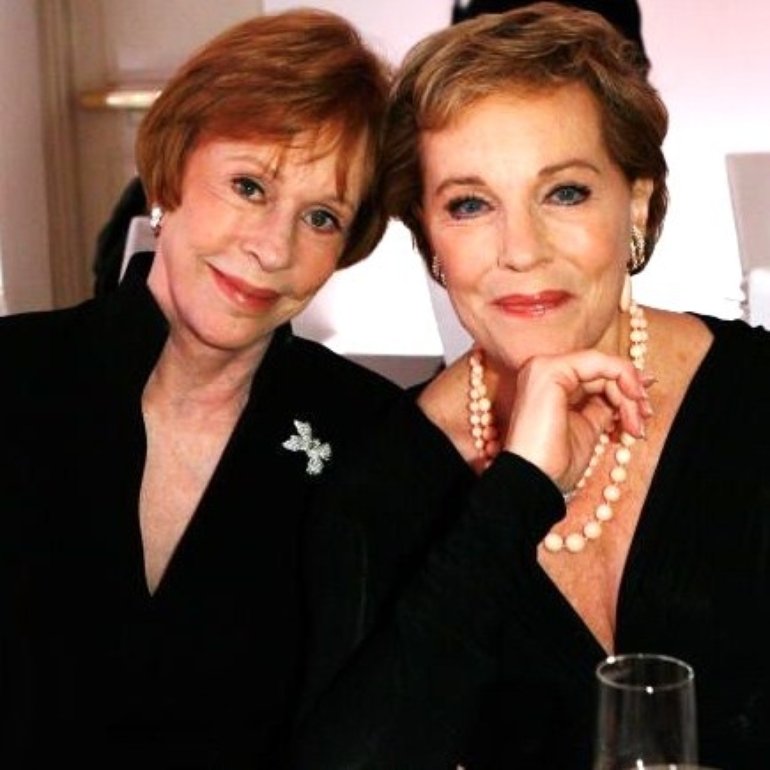As viewers transitioned from radio to television, there was a lot of conflict as advertisers volleyed between the two mediums. Many critics predicted an early death for radio which never came about. Radio found its new niche, relying more on news and music. Now, you can actually watch radio on television shows like Mike & Mike on ESPN.
Television has also featured several shows about radio stations over the years. Today we tune in to five of those.
Good Morning World (1967)

David Lewis (Joby Baker) and Larry Clarke (Ronnie Schell) are early morning DJs in LA with the Lewis and Clarke Show. Dave is happily married, while Larry considers himself a ladies’ man. Billy De Wolfe garnered a lot of attention as the best part of the show portraying station manager Roland Hutton, a stuffy and humorless boss. Rounding out the cast are Dave’s wife Linda played by Julie Parrish and the debut of Goldie Hawn as their next-door-neighbor.

The show was created by an unbelievable group: Carl Reiner, Sheldon Leonard, Bill Persky, and Sam Denoff. They all were part of the creative force of the Dick Van Dyke Show. Persky and Denoff were also the producers for That Girl. They based this show on their work as writers at WNEW-New York in the 1950s.

This photo made me laugh. They could actually be stand-ins for Dick Van Dyke and Mary Tyler Moore. It might even be the same kitchen!
Filmed before a live audience at Desilu, the show was created to showcase Schell. Ronnie had been a private on Gomer Pyle and this was to be his break-out show. Procter and Gamble sponsored the series which aired Tuesday nights. It should have done well during its slot, being up against NYPD and the Tuesday Night at the Movies.
The ratings were not great, and the network debated whether to cancel the show or bring it back for a second season. The two deciding factors might have been that Baker had a lot of trouble memorizing his lines and Parrish was dealing with some health issues. The network considered recasting both roles but ended up cancelling the series after 26 episodes. Surprisingly, it was released on DVD.
Schell went back to Gomer Pyle, USMC where he was promoted to corporal.

The best episode is “No News Like Nude News.” The stars are invited to a Nude Ranch and go thinking they are on their way to a dude ranch.
WKRP in Cincinnati (1978)

I consider WKRP the second-best radio sitcom. The premise for the show was that a new producer is brought in to help a struggling radio station in Cincinnati. Changing the format from easy listening to rock brings new life to the station and a lot of chaos to the staff. Hugh Wilson created the format. He can be seen as a police officer in the episode “Hold Up.”
Along with The Dick Van Dyke Show, The Mary Tyler Moore Show, Barney Miller, and The Office, this was one of the best ensemble casts in television. The characters included:
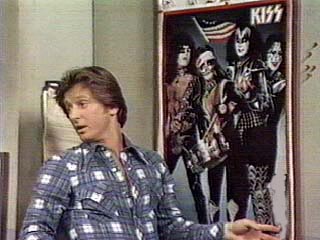
Andy Travis (Gary Sandy) is the producer who has a successful history of turning stations around.
Arthur Carlson (Gordon Jump) is the station manager whose mother owns the station. The Big Guy’s management style is a big part of why the station is not doing well. Art is more interested in fishing than radio. Jump was a DJ in Dalton in his former life.

Jennifer Marlowe (Loni Anderson) is the smart receptionist who is the highest-paid staff member. Anderson refused to be cast as a dumb blonde. Jennifer has a journalism degree and although she is only receptionist, she has the skills that keep Art Carlson out of the loop and everything running smoothly at the station. She is gorgeous and kind-hearted, but she refuses to type letters or make coffee.
Les Nessman (Richard Sanders) is the incompetent news reporter. He always wears bow ties and is best friends with Herb. Richard has a bandage on his head from a real-life injury in the pilot and he made that one of his trademarks. He often shows up with bandages on various parts of his body and we later learn that he has a large dog.
Herb Tarlek (Frank Bonner) is a tasteless boor. He is married but is always coming on to Jennifer. Herb’s suits are even louder than he is. In one episode, Venus says “Somewhere out there there’s a VW with no seats.” One of his suits actually was made from VW covers. Bonner grew up in Arkansas, and Herb always has a Razorback mug on his desk.
Bailey Quarters (Jan Smithers) originally took care of billing but is also a journalism major and shows she is a more competent on-air reporter than Les. She and Fever date off and on.
Venus Flytrap (Tim Reid) is the soulful, smooth-talking DJ. Although he is on the air at night and Fever has the morning shift, they become best friends. His real name was Gordon Sims and he was a school teacher before his DJ career took off.
Dr. Johnny Fever (Howard Hesseman) is the burned-out DJ from LA. He was fired for saying “booger” on the air at his last job. He’s an insomniac and addicted to coffee. His hippie lifestyle and cynicism do not mesh with Herb and Les. Originally Hesseman was asked to read for the part of Les Nessman but would only audition for Fever. David Cassidy turned down the role of Johnny Fever. The character of Fever was based on Atlanta’s Bobby Harper who was on the morning show on WQXL 790 AM. The creator of the show, Hugh Wilson, had previously worked there.
In many of the scenes there were bulletin boards with bumper stickers plastered all over that had been sent in from radio DJs all over the country. As a tribute to John Lennon, his photo was displayed in the background after his assassination.

The show was videotaped because rock song rights were cheaper for taped shows than filmed shows. When the show went into syndication, almost all of the music had to be replaced. When the DVD set was being created, the original music was put back in. An agreement could not be reached until 2014.
Although it’s hard to believe, in 1980 Hugh Wilson collaborated with Hanna-Barbera to create an animated version of WKRP where all the characters are played by dogs. The show never actually happened.
WKRP was on Monday nights against Welcome Back Kotter and Little House on the Prairie. After the first season, it was moved repeatedly. The show was cancelled after four seasons. It accumulated ten Emmy nominations including three for outstanding series. The show was much more successful in syndication.

The show was filmed in Los Angeles, but the opening and closing scenes as well as several episode scenes were filmed at the Enquirer Building in Cincinnati. That building is currently a Hampton Inn/Homewood Suites at 615 Vine St. near Fountain Square. The radio station said they were housed in the Osgood R. Flimm Building.
One of the most memorable parts of the show was the theme song:
“Baby, if you’ve ever wondered, wondered whatever became of me. I’m living on the air in Cincinnati, Cincinnati WKRP. Got kind of tired of packin’ and unpackin’, town to town, up and down the dial. Maybe you and me were never meant to be, just maybe think of me once in a while. I’m at WKRP in Cincinnati.”
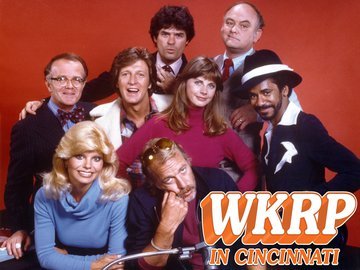
In 2015, a non-profit radio station in Raleigh, 101.9 was given the WKRP call letters. An independent television station, channel 25, in Cincinnati also received the WKRP designation in 1990.
The clever writing and memorable characters have gained this sitcom a great reputation in television history.
Hello Larry (1979)

McLean Stevenson was hoping to be the star of M*A*S*H. Once he realized Alan Alda was firmly entrenched in that position, he opted out of his contract to star in his own show.
The result was Hello Larry about a man, Larry Alder, who is divorced and moves with his two teenage daughters to Portland to star in a call-in psychiatric radio show. Kim Richards played his daughter Ruthie and Krista Erickson played Diane. Lisa Whelchel auditioned for the role of Ruthie but lost out to Richards and ended up on Facts of Life which she was grateful for.

The other cast members included Joanna Gleason (Monty Hall’s daughter) as the radio producer, George Memmoli as Earl the engineer, and John Femia as Tommy Roscini. Larry also hung out with a familiar face – -Meadowlark Lemon, former Globetrotter, who owned a Portland sporting goods store.
The show was owned by the same company who created One Day at A Time and this was a mirror image of that show focusing on a single mom with two daughters.

The ratings were not good. The show was up against Charlie’s Angels and the Wednesday Night Movie. Several months into the season, to bolster ratings, the writers brought in the cast of Diff’rent Strokes which was a popular show that aired right before Hello Larry. It was scripted that Larry and Phil Drummond had served together in Korea. It did not help the ratings. The show went through a variety of scheduling changes all with the same result. An issue that certainly didn’t help the show was the Iranian hostage crisis. The show was often interrupted with special news breaks.
After 38 episodes, the show died a quiet death. A TV Guide poll in 2002 listed Hello Larry as the 12th worse show of all time. It was probably best remembered as the show that continually got made fun of by Johnny Carson for being so bad.
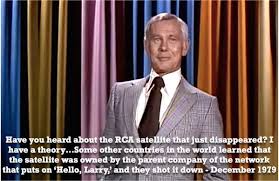
It’s hard to believe an actor would leave one of the most creative and popular shows of all time to move to one of the worst shows of all time.
Frasier (1993)
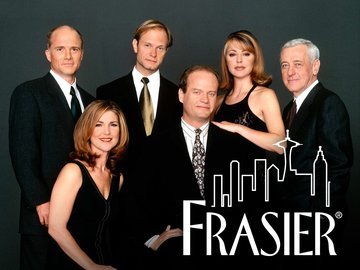
I think that Fraisier was the best radio show on television. Frasier was on the air 12 years resulting in 263 episodes. The show averaged only 24 episodes a year. The hundredth episode was entirely filmed on the streets of Seattle. Leaving the cast of Cheers, Frasier Crane (Kelsey Grammer) moves back to Seattle to host a show as a radio psychiatrist.

After an injury, his father, a former policeman, moves in with Frasier. Fraiser provides advice on the airwaves while struggling in his personal relationships, especially with his cranky father and his pretentious brother. The producers did not want the show to resemble WKRP too much, so they came up with the concept of having Frasier live with his father, so family relationships became important.

John Mahoney plays Martin Crane, a grumpy, uncultured man who cannot understand his sons. Although Martin did not care about high-brow topics, John Mahoney taught Pierce a lot about wine and opera during the Frasier years.

David Hyde Pierce was Frasier’s brother Niles. The role of Niles was written just for Pierce. The brothers were extremely competitive, although they could count on each other when it mattered. Frasier went to Harvard and Oxford while Niles went to Yale and Cambridge. Their mom was a scientist and the boys were named after lab rats she worked with. Both brothers had expensive tastes, intellectual interests, and high opinions of themselves. Niles was married to Maris, but we never see her. In later seasons, after getting a divorce, Niles marries Daphne. The brothers often meet at Café Nervosa.
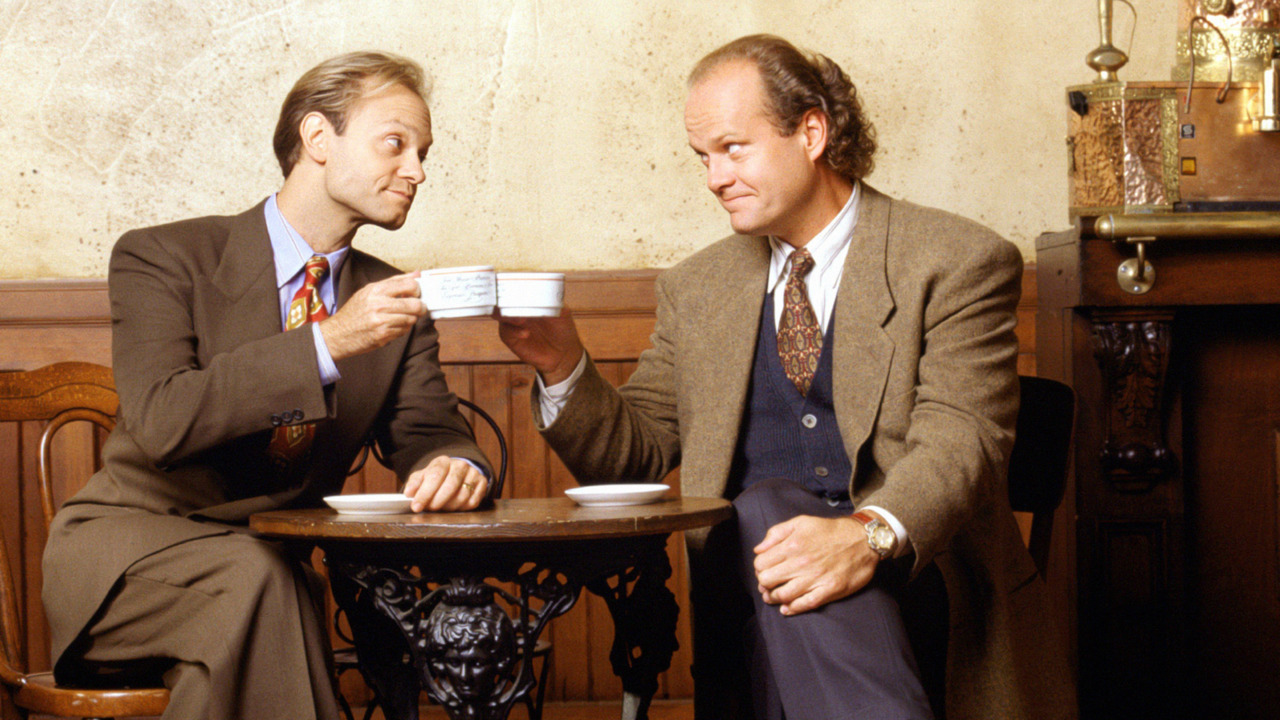
On an episode of Cheers, Frasier explained that his father had died in an accident and he had no siblings. When Sam (Ten Danson) comes to visit on Frasier, the error is explained by having Frasier tell Sam that he made the story up because he was mad at his family. All but two characters from Cheers starred on Frasier. Coach had passed away and Kirstie Alley (Rebecca) was a scientologist who did not accept psychology.

Jane Leeves plays Daphne Moon, who was hired to be Martin’s therapist and caretaker.
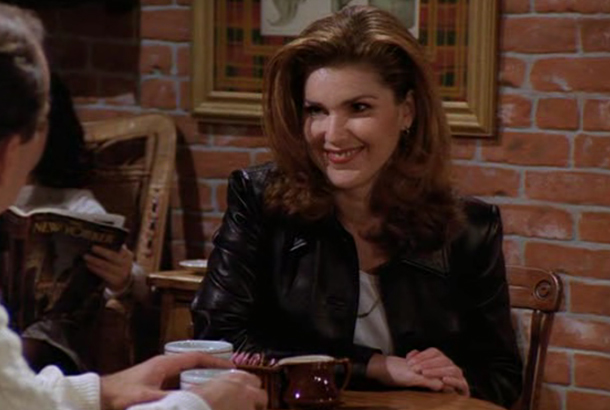
Peri Gilpin (Roz Doyle) is Frasier’s radio producer and becomes one of his best friends. The role of Roz had been narrowed down to Gilpin or Lisa Kudrow. Kudrow was funnier but lacked the forcefulness she needed in the workplace, so Gilpin got the job.

Another important character was Martin’s dog Eddie. John Mahoney said Eddie got more fan mail than anyone else on the show. To get Eddie to lick Mahoney’s face, liver pate was placed strategically on his face.

Bebe Neuwirth was offered a regular role on the show as Frasier’s ex-wife, but she wanted to return to Broadway, so she guest-starred from time to time. She appeared in 12 shows.

Frasier’s apartment was almost another character on the show. He lived in an ultra-modern apartment. A Dale Chihuly sculpture is seen near the fireplace. Above the fireplace is another artwork by Laddie John Dill, an LA sculptor. A Coco Chanel sofa was recovered at a cost of $15,000 to add realism. In contrast, Martin brings his old, tattered recliner which clashes with the rest of the apartment – a symbol of the way he and Frasier clash. On the first episode, a deliveryman played by Cleto Augusto brings the chair in. On the final episode, the same actor came and took the chair away. Martin explains to Frasier that he spent many important life moments in the chair such as watching the moon landing and specific sports events. When he came home from work, he often fell asleep in the chair, and his wife would kiss him and send him to bed. Frasier’s mother had passed away a few years earlier. Frasier finally understands the significance of the chair. On the last episode, Martin is marrying again, and he moves out. Wendie Malick plays his second wife.

FRASIER — “Goodnight, Seattle” Episode 21 — Pictured: (l-r) Wendie Malick as Ronee Lawrence, John Mahoney as Martin Crane, Kelsey Grammer as Dr. Frasier Crane — (Photo by: NBC/NBCU Photo Bank)
Guest stars played callers on the radio show. Often, they phoned in their lines. Callers included David Duchovny, Phil Donahue, Marlo Thomas, Linda Hamilton, Olympia Dukakis, Daryl Hannah, Chris Reeve, and Estelle Parsons.
Grammer made life a bit anxious for his guest stars. He used an acting method called requisite disrespect where he did not rehearse and learned his lines right before each scene.
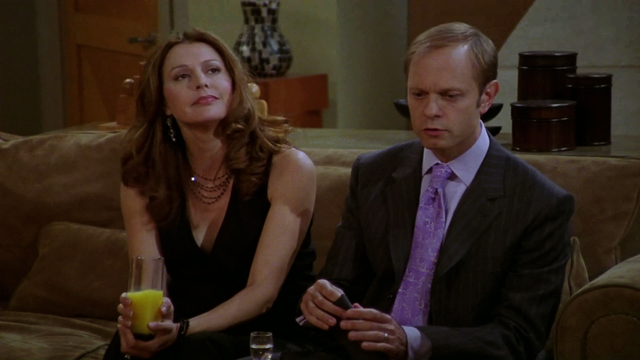
The theme song was “Tossed Salad and Scrambled Eggs” by Darryl Phinnessee and Bruce Miller. Miller wanted Mel Torme to sing the theme for the show, but the producers wanted Kelsey Grammer who ended up recording it.
Critics had great respect for the show. The series holds the record for most sitcom Emmys – 37. It had the record for most Emmys of any genre till Game of Thrones won its 38th recently. The five best episodes include “The Ski Lodge,” “The Doctor is Out,” “Wheels of Fortune,” and “Ham Radio.”
Grammer and James Arness are currently tied for the character who was on television the longest – 20 years. Arness played Marshall Dillon on Gunsmoke for 20 years while Grammer played Frasier on Cheers and Frasier for a total of 20 years. The Simpsons have actually passed both of them if animated characters count.
Not only was Fraiser a great radio sitcom, but it is one of the best sitcoms on my top 15 list.
News Radio (1995)

News Radio explores the office politics and interpersonal relationships among the staff of WNYX, New York’s #2 news radio station.

Dave Nelson (Dave Foley) is the boss who tries his best to manage a quirky staff. He was raised in Wisconsin and some of his interests include tap dancing, a cappella singing, knife-throwing, and ventriloquism. He is polite and always in control. He talks to his mother frequently and keeps a photo of her on his desk. He loves coffee and classic sitcoms, especially Mr. Ed and Green Acres.

Bill McNeal (Phil Hartman) is an egotistical co-anchor. He is arrogant and insubordinate. There are many gaps in his knowledge, but he does show flashes of concern for others. Near the end of the show’s run, Hartman was killed; tragitically, Hartman was shot by his wife.

Catherine Duke (Khandi Alexander) is the other co-anchor. She and McNeal previously had an affair and they are rivals. In the fourth season, she takes a job in London.

Jimmy James (Stephen Root) is an eccentric owner. He is a billionaire and feels the need to micromanage the station. He is always searching for a wife and loves to air his rivalries with other entrepreneurs such as Ted Turner and Bill Gates. In the finale, he buys a radio station and newspaper in New Hampshire and takes most of the staff with him.

Lisa Miller (Maura Tierney) is an ambitious producer who is Nelson’s on-and-off-again girlfriend. She’s an overachiever who can do complex math problems and has a detailed life plan. In season five, she marries Jimmy’s archenemy Johnny Johnson (Patrick Warburton).

Matthew Brock (Andy Dick) is a hapless reporter who is clumsy and always tripping or falling down. He idolizes McNeal. He has a dental degree, loves sci fi, and has a crush on Lisa.

Joe Garrelli (Joe Rogan) is a handyman and electrician. He is infatuated with Catherine and believes conspiracy theories, especially about extraterrestrials. Ray Romano was originally hired for this job, but his verbal comedy did not mesh well with the rest of the cast.

Beth (Vicki Lewis) is the quirky secretary. She typically wears inappropriate clothing, chews gum all the time, and likes to complain about her low salary. She was named Beth based on the Kiss song.
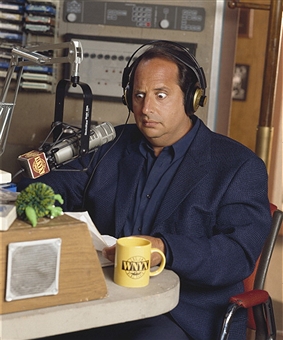
Max Lewis (Jon Lovitz) was McNeal’s replacement after Hartman’s death. He was inept, eccentric, insecure, unprofessional and a former colleague of Bill’s.
The show was on the brink of cancellation every season. It never placed higher than 26th and changed time slots 11 times. It was briefly cancelled in 1998, but the network reversed its decision and ordered 22 more episodes and then it was cancelled for good.

The show was fast paced and witty. Sarcasm ruled the dialogue. Physical humor and sight gags also had a place in the humor. The show differed from the casts in The Office or the Mary Tyler Moore Show because they were a dysfunctional family without the affection and empathy of those characters. The cast was banned from SAG awards for bad behavior at the first ceremony.
Shows featuring radio stations seem to be hit or miss. Good Morning World and Hello Larry did not do well. I think everyone can agree on WKRP in Cincinnati and Fraiser are well-written shows. News Radio seems to fall somewhere in the middle. Some people seem to love it while others thought it missed the mark. I think the show is well written, but the characters are not endearing. They don’t grow or change for the better. We can grow to love a Herb Tarlek and a Ted Baxter, but there is nothing redeeming about the crew here. I guess I would tune out. There are too many good shows out there to watch a “maybe, maybe not” show.
